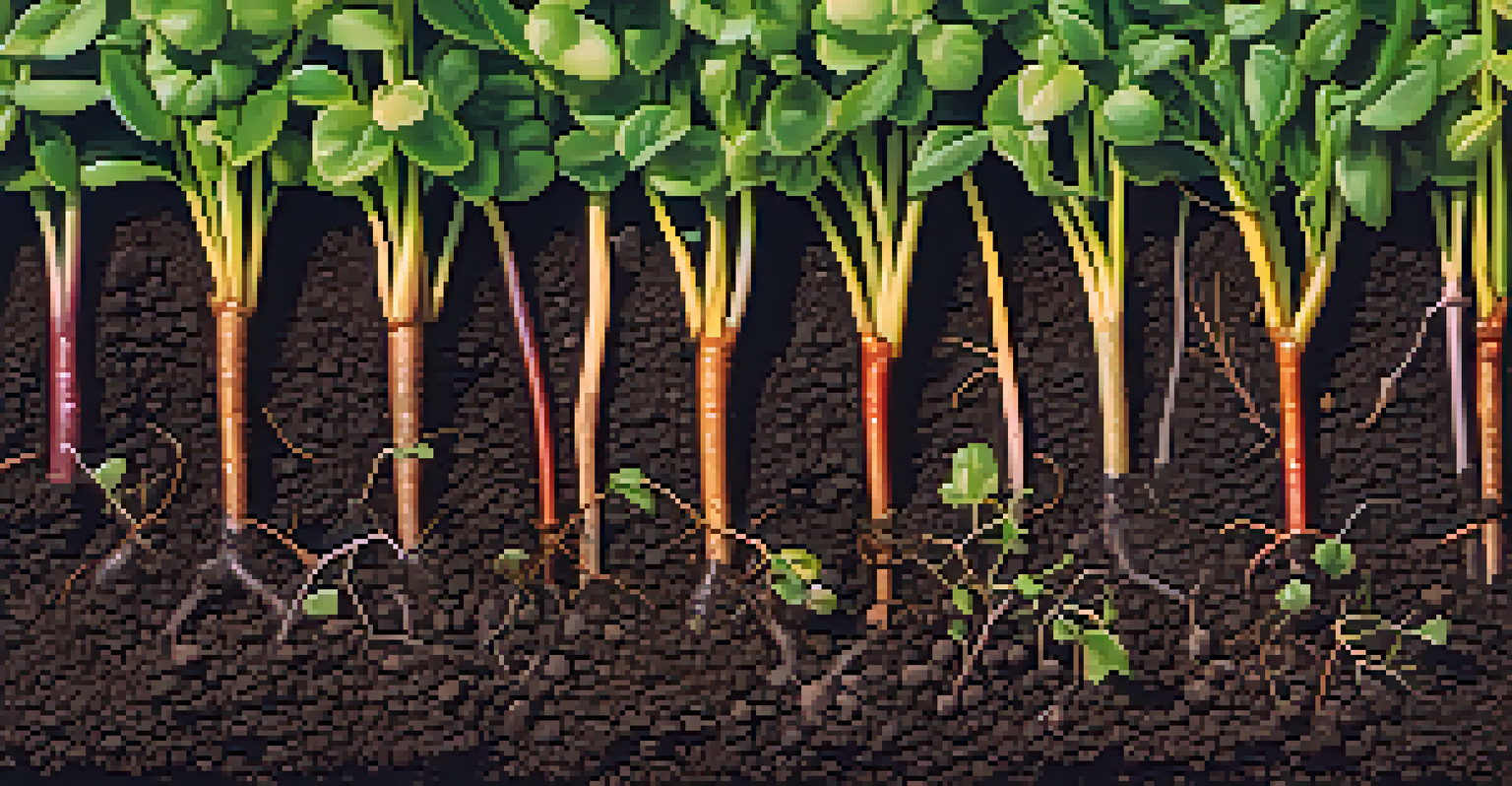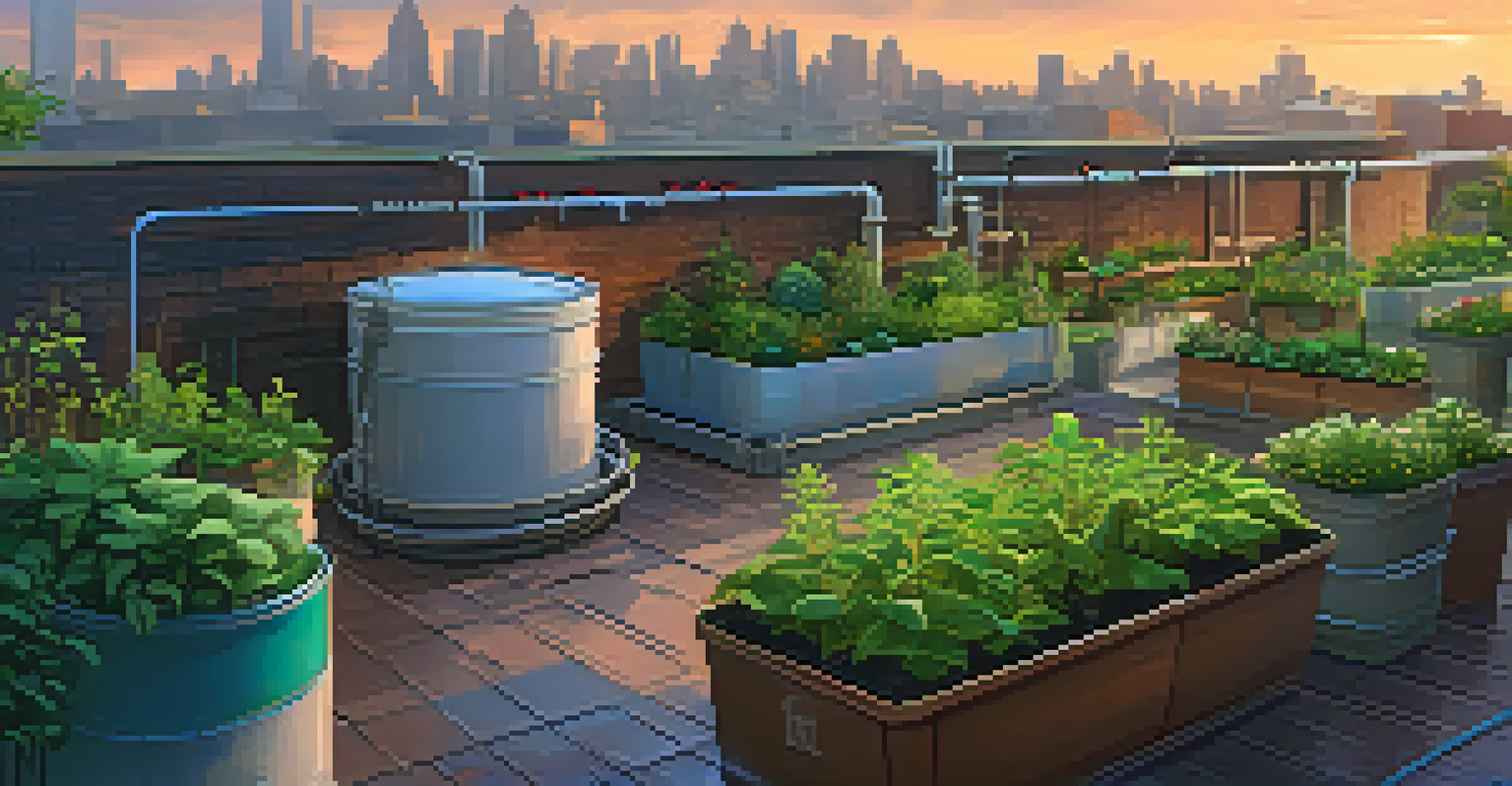Exploring Entheogens: Cultivation Techniques for Sustainability

Understanding Entheogens: A Brief Overview
Entheogens are substances derived from plants that have been used for centuries in spiritual and ceremonial contexts. These natural compounds, such as psilocybin mushrooms and ayahuasca, can alter consciousness and promote introspection. They foster a connection with nature and the self, often leading to profound experiences.
Nature does not hurry, yet everything is accomplished.
In recent years, interest in entheogens has surged, both for therapeutic uses and spiritual exploration. As more people become aware of their potential benefits, sustainable practices in their cultivation are crucial. This ensures that these valuable plants remain accessible for future generations.
Sustainability in entheogen cultivation is not just about preserving the plants; it’s about respecting the ecosystems from which they come. By adopting responsible methods, we can harmonize our relationship with these powerful substances and the environment.
The Importance of Sustainable Cultivation
Sustainable cultivation techniques help mitigate the environmental impact of harvesting entheogens from the wild. Wild harvesting can lead to over-exploitation, threatening the survival of these plants. By implementing sustainable practices, we can ensure that entheogens are cultivated without depleting natural resources.

Moreover, sustainable methods often enhance the quality of the plants. Healthy ecosystems provide better growing conditions, resulting in more potent and beneficial entheogenic substances. This is a win-win situation, supporting both the grower and the ecosystem.
Sustainable Cultivation is Essential
Implementing sustainable practices in entheogen cultivation helps preserve natural resources and promotes healthy ecosystems.
By prioritizing sustainability, cultivators can also develop a deeper understanding of the natural cycles involved in plant growth. This connection encourages a more respectful relationship with the land and the plants themselves.
Soil Health: The Foundation of Sustainable Cultivation
Healthy soil is the backbone of any successful cultivation practice. It provides essential nutrients, supports plant growth, and fosters a vibrant ecosystem. For entheogens, maintaining soil health means using organic amendments and promoting biodiversity.
The greatest threat to our planet is the belief that someone else will save it.
Techniques like crop rotation and cover cropping can enhance soil fertility and prevent erosion. By nurturing the soil, cultivators can create a thriving environment for their plants. This not only leads to better yields but also reduces the need for chemical fertilizers.
Furthermore, healthy soil supports beneficial microorganisms that can help fend off pests and diseases. This natural defense system aligns perfectly with the principles of sustainability, allowing for a more harmonious growing environment.
Water Management: Essential for Sustainable Practices
Water is a critical resource in any cultivation endeavor, and managing it wisely is key to sustainability. Overwatering can lead to root rot and other issues, while underwatering can stress the plants. Understanding the specific water needs of entheogenic plants is essential for optimal growth.
Implementing techniques such as drip irrigation or rainwater harvesting can significantly reduce water waste. These methods provide plants with consistent moisture while conserving resources. Additionally, mulching can help retain soil moisture, further promoting sustainable practices.
Soil and Water Management Matter
Maintaining soil health and managing water wisely are crucial for fostering optimal growth and sustainability in entheogen cultivation.
By being mindful of water usage, cultivators can contribute to the preservation of this vital resource. This not only benefits their plants but also supports the larger ecosystem.
Choosing the Right Cultivation Methods
When it comes to cultivating entheogens, there are various methods to choose from, each with its own sustainability implications. Traditional methods, such as growing in the ground, offer a direct connection to nature. However, container gardening can also be a viable option, especially in urban settings.
Hydroponics is another innovative approach that allows for soil-less cultivation, using nutrient-rich water instead. While this method can be resource-intensive, it can also yield high-quality plants when managed properly. The key is to evaluate the environmental impact of each method and choose the one that aligns best with sustainable practices.
Ultimately, the choice of cultivation method should reflect a balance between efficiency, sustainability, and the needs of the plants. As we explore different techniques, we can find ways to enhance our connection to these extraordinary organisms.
Pest Management: Natural Solutions for Healthy Plants
Managing pests sustainably is crucial for healthy entheogen cultivation. Instead of relying on chemical pesticides, cultivators can explore natural alternatives that are less harmful to the environment. Techniques such as companion planting can attract beneficial insects that help control pest populations.
Additionally, maintaining a diverse ecosystem can create a balance that naturally deters pests. For instance, planting flowers and herbs alongside entheogenic plants can attract pollinators and predators of common pests. This approach not only helps protect the plants but also promotes biodiversity.
Community Drives Sustainable Practices
Collaborating and sharing knowledge within communities enhances sustainable cultivation efforts and fosters a culture of respect for nature.
By embracing natural pest management strategies, cultivators can reduce their ecological footprint while ensuring the health and vitality of their plants. This commitment to sustainability reflects a deeper respect for the interconnectedness of all living things.
Community and Knowledge Sharing in Cultivation
Cultivating entheogens sustainably is not just a solo endeavor; it thrives in community. Sharing knowledge with fellow cultivators can lead to better practices and innovative solutions to common challenges. This collaborative approach not only benefits individual growers but also strengthens the community as a whole.
Participating in workshops, online forums, or local meet-ups can provide valuable insights into sustainable techniques. Engaging with others who share a passion for entheogens fosters an environment of learning and support. This interconnectedness can lead to greater resilience and adaptability in cultivation practices.

Ultimately, community-driven initiatives can amplify the impact of sustainable cultivation. By working together, we can cultivate not only plants but also a culture of respect and stewardship for our natural world.